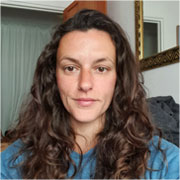Dual diagnosis treatment involves managing symptoms of both a mental health condition and a substance use disorder. Treating both conditions simultaneously is often imperative to reaching a positive outcome and preventing relapse. This includes integrated care, involving a multidisciplinary team that treats many aspects of the individual’s life and well-being.
- Dual diagnosis treatment involves integrated treatment for mental health and substance use disorders, managing aspects of both conditions.
- Examples of dual diagnosis treatments include medications, specialized therapies, support groups, family therapy, psycho-education, and psychosocial interventions.
- Dual diagnosis assessment involves screening for substance use disorders and mental health conditions, often using various tools and diagnostic criteria.

Understanding dual diagnosis treatment
Dual diagnosis treatment involves managing symptoms of a severe mental health condition and a substance use disorder (SUD) concurrently. Without proper treatment, dual diagnosis can result in adverse consequences.[1]
This often involves treating the individual's mental health symptoms and substance use behaviors with pharmacological and psychological interventions. Additionally, professionals may implement psychosocial interventions to manage housing, family interventions, and community involvement. These treatments will be tailored specifically to the individual’s needs.[2]
Dual diagnoses can include various mental health conditions, such as schizophrenia, depression, or bipolar disorder, along with SUDs of various substances, including alcohol, opioids, or stimulants. As such, the individual requirements for treatment will vary significantly depending on the person.
A multidisciplinary team involving several professionals will assess and manage the individual’s treatment needs. This team will be closely involved with each stage and aspect of treatment to ensure comprehensive and effective care.[1]
Integrated dual diagnosis treatment options
People with dual diagnosis should receive integrated care, meaning that treatment is tailored to meet the needs of both their mental health and substance use issues, rather than approaching these conditions separately. [3]
Mental health symptoms can impact substance use behaviors and vice versa. Often, individuals may use substances to help manage mental health symptoms, while conversely, substance withdrawal can also cause emotional difficulties. As such, treatment approaches that recognize and manage both conditions simultaneously can provide a better outcome and help prevent relapse of either condition. [1]
Medications
Common medications for mental health conditions include antidepressants, antipsychotics, and mood stabilizers. For SUDs, medications can be used to help manage withdrawal, cravings, and abstinence maintenance. It is not uncommon for psychiatric medications to be used to assist with SUD treatment.[1][4][14][15]
Within dual diagnosis treatment, medications are commonly used to help manage the neurobiological changes that occur or manage acute symptoms or episodes. Some medications may be avoided if they are considered to have addictive potential or if they could exacerbate certain symptoms.
Therapeutic interventions
Therapies commonly used to treat substance use disorders and mental health conditions include: [1][5][6]
- Cognitive behavioral therapy (CBT).
- Integrated motivational interviewing.
- Dialectical behavior therapy (DBT).
- Trauma-focused therapy.
- Mindfulness-based therapy.
- Contingency management.
- Family therapy.
Therapies are often a crucial part of both mental health and substance use treatments, as they can cultivate helpful skills:
- Teach coping strategies to manage emotional distress and substance cravings.
- Recognize and change harmful thought and behavior patterns.
- Identify triggers that impact mental well-being and substance use behaviors.
- Identify the underlying causes, experiences, or trauma that contribute.
- Provide a space to explore and discuss thoughts, emotions, and experiences.
- Provide motivation and accountability for recovery and improvement.
Groups
Support groups can be an important aspect of addiction recovery, providing many benefits throughout the recovery process, including community involvement and support, shared experiences, and accountability. Within dual diagnosis, this can also provide a space for people to feel safe sharing their emotional distress and mental health experiences with others.
Support groups such as Double Trouble in Recovery (DTR) utilize 12-step recovery principles in their meetings with an approach that is specifically designed for dual diagnosis. These types of groups can help provide support and education around common aspects of dual diagnosis recovery, such as medication adherence, side effects, overcoming stigma, and managing mental health symptoms. [1][7]
Psychosocial interventions
Many people with severe mental illness and SUDs also experience difficulties in other areas of their lives, such as housing, careers, community involvement, and socialization. Within dual diagnosis treatment, specialist professionals can help manage these aspects to improve the individual's functioning and general well-being, integrating this into other areas of treatment such as therapy. [1][2]
Education and prevention
Education can be a significant part of mental health and substance use treatments. This can involve educating individuals and their family members about their condition and treatments, the importance of medication adherence, and how mental health and substance use impact one another.
This can also involve discussing relapse prevention, such as formulating a relapse prevention plan. [1]
Assessments and tests for dual diagnosis
Assessing for dual diagnoses can include diagnostic tests to assess the individual’s mental state and substance use behaviors. This will involve utilizing diagnostic criteria from the Diagnostic and Statistical Manual of Mental Disorders (DSM-5) for SUDs and certain mental health conditions. [8]
A basic assessment will be completed that helps gather information about the individual’s past and present symptoms and life experiences, history of mental health and substance use issues, and any family history of mental health and substance use.
It may also be necessary for the professional to assess the individual for their level of safety, to determine if they are a risk to themselves or others. [9]
SUD criteria in the DSM-5 can help determine the severity of the individual's substance use, from mild to severe, which helps ensure appropriate treatment. Additionally, various assessment tools can be used to screen for substance use issues, including: [9][10][11]
- Drug Abuse Screen Test (DAST-10).
- Tobacco, Alcohol, Prescription Medication, and other Substance Use (TAPS).
- Michigan Alcohol Screening Tool (MAST 25).
- The Alcohol Use Disorders Identification Test (AUDIT).
Mental health assessment can also involve DSM-5 criteria, along with the use of tools such as:
- Mini-Mental State Examination (MMSE).
- Depression/Anxiety/Stress Scale (DASS).
- Psychotic Symptom Rating Scales (PSYRATS).
Barriers to treating co-occurring disorders
A significant barrier to diagnosing and treating dual-diagnosis medical problems is the ability to identify specific conditions and symptoms. This may require first separating multiple diagnoses to consider them separately, to see their overlap. Many symptoms of mental illness and SUDs overlap and impact one another, which can create complications in differentiating between and identifying specific conditions. [12]
Because of this, many people with co-occurring disorders may receive an incorrect diagnosis or may only receive treatment for one condition, if any, impairing treatment outcomes. [6]
Additional barriers to treatment can include: [6][12]
- Access to appropriate services: Diagnosing and treating dual diagnosis requires specialized and well-trained professionals, which may not always be available in all areas. Some people might be unable to access services due to finances, housing, incarceration, transportation, or other factors. (Related: Free OSAR Services in Texas)
- Willingness to seek treatment: Various factors can impact people’s willingness to seek treatment, including financial or time constraints, fear of judgment, and reluctance to quit substance use.
- Stigma: People may worry they will be judged or receive unfair treatment due to their mental illness or substance use, preventing them from accessing care. Also, structural or personal stigma may influence some service providers, contributing to inappropriate or ineffective treatments.
- Treatment adherence: There can be several reasons why people with dual diagnosis drop out of treatment or are unable to continue.
What to look for from dual diagnosis treatment
There are many things to consider when searching for a dual diagnosis treatment provider. This process can often be more difficult than looking for individual treatment, as the treatment facility must understand the nuances of your substance and mental health disorders and can provide integrated treatment for both.
The following list can be a useful tool in beginning and planning for this process. Some of these tips may not apply to your situation, and there may be other necessary steps that are not included here. However, the below will ensure you are looking for the right level of care and will narrow your options to the rehab treatment facilities that are right for you.
Dual diagnosis treatment checklist
- Make sure you are ready to receive treatment for both your substance use and mental health condition.
- Get advice from a healthcare professional, ideally one who understands your conditions.
- Speak to your healthcare provider about appropriate tests and assessments to ensure correct treatment.
- Understand to treatment process and levels of care for dual diagnosis. Don't go in with unfounded expectations.
- Research rehab centers to ensure their approach and philosophy match your needs and expectations.
- Research payment options and fees to remove any unexpected costs.
- Be aware of any additional treatment parameters that may benefit your treatment (e.g., do you have another health condition that may impact treatment, do you need specialized treatment, do you need amenities/a luxury setting, etc).
- Prepare to ask questions about the treatment before enrollment.
Accessing dual diagnosis treatment centers
There are numerous treatment and rehabilitation centers all over the United States, offering a range of treatments. The Recovered Directory can help you find a treatment center in your area that provides dual diagnosis treatment.

-person-thumbnail.jpg?v=1758880627)

-guide-detail.jpg?v=1722503307)
